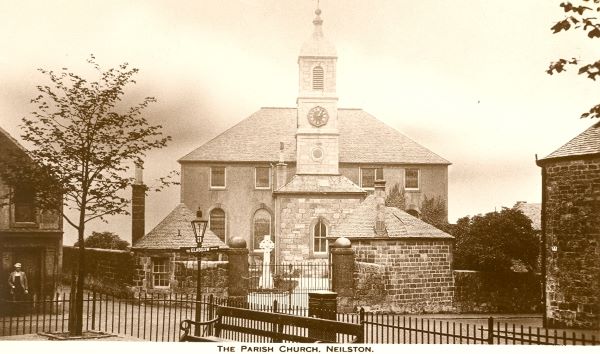

Churches and religious buildings
Churches and religious buildings
We can chart the religious history of the area back to the 6th century AD when the Celtic church began to establish itself in Scotland.
Much of the history of the Celtic church in the area is associated with St. Conval who was said to have founded religious settlements at Chappell in Barrhead and at Eastwood. St. Conval was said to be the son of an Irish prince and a spiritual disciple of St. Kentigern.
In the 11th century, under the reign of Malcolm III and his Queen, Margaret, Scotland began a process of conversion to the Roman Church and this was completed during the reign of David I (1124-1153)
David I appointed Walter Fitz Alan High Steward of Scotland and granted him many lands in the East Renfrewshire area which he in turn granted to his followers. One of these men, Robert Croc founded a church at Neilston, the revenue from which he granted to the monastery at Paisley, founded by Walter Fitz Alan in 1163. We also know from records of similar grants to the monastery that there were churches at Mearnskirk and Eastwood around this time.

Scotland formally broke with the Catholic church in 1560 and Protestantism emerged as the official faith of the country. Turbulent times followed from 1638, with the signing of the National Covenant, until the Presbyterian Church of Scotland became the established church in 1688.
However, the established church became divided on the issues of patronage and state interference and a number of splits occurred resulting in the formation of independent churches, such as the Secession Church and the Free Church. Although many of these congregations came together again at unions of 1847, 1900 and 1929, some remain independent today as the United Free Church and the Free Church of Scotland.
After the Reformation, the Roman Catholic population became virtually non existent in East Renfrewshire until the 19th century, when the need for workers that sprang from the industrial revolution, drew many people from Ireland and the Highlands to the area. Busy industrial villages such as Busby, Thornliebank and Neilston grew around the cotton mills, bleachfields and printworks connected to the booming textile industry.
At first Roman Catholics had to travel long distances to worship, for example, residents in Busby would need to travel to Glasgow or East Kilbride until St. Bridget’s was built in Eaglesham in 1858. Similarly, those in Barrhead and Neilston would have to travel to Paisley for religious observance, until St. Thomas’s was built in1861.
Today over thirty places of worship can be found in the East Renfrewshire area, reflecting a wide diversity of faiths and cultures, These include the Baptist Church, the Church of Christ, the Church of Scotland, Congregational, Episcopal, United Reform and Evangelical Churches, Roman Catholic chapels, and several synagogues.
